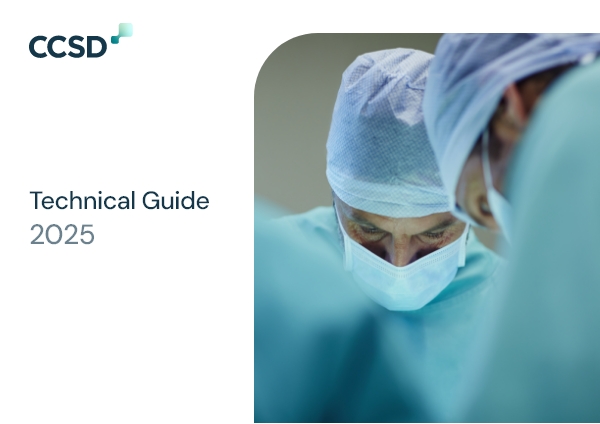CCSD Technical guide
Within the Technical Guide, you will find information on coding conventions, coding principles, and guidelines for submitting code requests.
The Technical Guide covers a wide range of topics, including the criteria for code inclusion or amendment, and the process for requesting changes.
Additionally, the guide offers insights into the classification and description of procedures and diagnostic tests, ensuring accuracy, clarity, and consistency in coding practices.
Code Requests to Replace Dual Coding
Guidance for code requests that replace dual coding.
Explore
Therapeutic and Diagnostic Combinations
Guidance for therapeutic and diagnostic combinations.
Explore
Open Endoscopic and percutaneous code combinations
Guidance for how to use code combinations involving endoscopic and percutaneous codes.
Explore
Subset procedures
Guidance for how to use subset procedure codes.
Explore
Code Requests to Replace Dual Coding
No common clinical intervention should routinely require more than one code, but occasionally two procedures undertaken at the same attendance may legitimately require two codes to fully describe them. In practice, you should contact the insurer if you are considering using two procedure codes for this reason.
If there is more than one code to describe a common clinical intervention, a new code request should be made so that a new single code may be developed.
Therapeutic and Diagnostic Combinations
Therapeutic procedures are prime procedures and are intended to include secondary diagnostic procedures on the same organ or the approach to that organ when performed at the same time as the therapeutic procedure.
Coding more than one diagnostic procedure for the same organ or the approach to that organ creates an inappropriate combination of codes. Coding more than one therapeutic procedure for the same organ or the approach to that organ creates an inappropriate combination of codes.
Open Endoscopic and percutaneous code combinations
Suppose a procedure code narrative does not specify whether it is an open or an endoscopic procedure. In that case, using it with a code that specifies an endoscopic procedure is an inappropriate combination of codes. For example:
- M2930 Removal of prosthesis from ureter + M3000 Endoscopic examination of ureter
Combining an open and an endoscopic procedure code for the same organ creates an inappropriate combination of codes. For example:
- M0610 Open removal of calculus from kidney + M1000 Therapeutic endoscopic operations on kidney (include cystoscopy and retrograde catheterisation)
Combining an open and a percutaneous procedure with the same organ creates an inappropriate combination of codes. For example:
- M0610 Open removal of calculus from kidney + M0940 Percutaneous nephrolithotomy (including cystoscopy and retrograde catheterisation)
A combination of procedure codes with different approaches (open, endoscopic or percutaneous) with the same organ specified in the narrative creates an inappropriate combination of codes. For example:
- M0610 Open removal of calculus from kidney + M0800 Other open operations on kidney
Subset procedures
Combining a subset procedure code with the main procedure code (of which the subset procedure code forms a part of) is an inappropriate combination of codes. For example:
N0500 Bilateral excision of testes + N0700 Excision of lesion of testis
